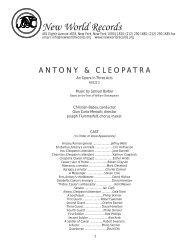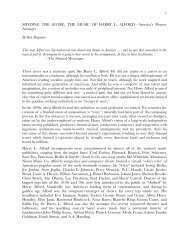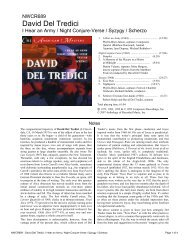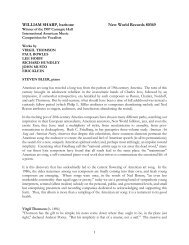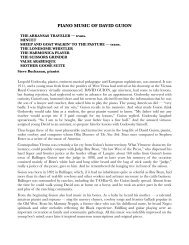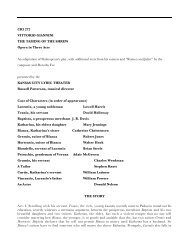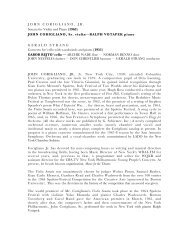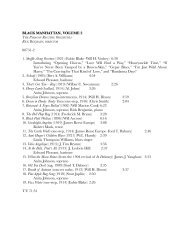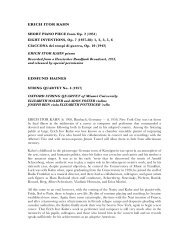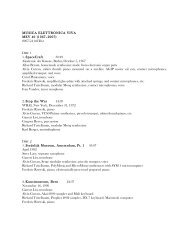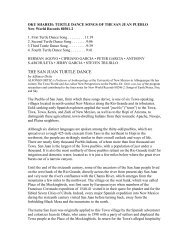Brother, Can You Spare a Dime? - New World Records
Brother, Can You Spare a Dime? - New World Records
Brother, Can You Spare a Dime? - New World Records
You also want an ePaper? Increase the reach of your titles
YUMPU automatically turns print PDFs into web optimized ePapers that Google loves.
the mortgaged farms in the Mideast and Midwest were delinquent. An additional strain<br />
was put on these regions by a reversal of the migration from rural to urban areas that<br />
characterized most of the early twentieth century; in the early thirties more than two<br />
million Americans returned from the cities of the East and North to their native regions.<br />
A series of natural disasters made matters even worse. Iowa, Nebraska, and South Dakota<br />
were afflicted with a plague of grasshoppers in the late summer of 1931, and that year<br />
and the next saw droughts and small dust storms in these and neighboring states. Modern<br />
agricultural practices had stripped most of the middle belt of the country of its natural<br />
grass cover and with it the moisture normally held in the grass roots. The following years<br />
were much worse, with enormous stretches of farmland simply drying up and blowing<br />
away as dust. In 1933, 1934, and 1935 much of the Dakotas, Nebraska, Kansas,<br />
Oklahoma, and Arkansas was arid, choked with dust. Nothing would grow. More than a<br />
million people packed up their meager belongings, abandoned their land, and headed<br />
west in the hope of finding some sort of work.<br />
Though Tin Pan Alley songs reached millions through records, radio, and movies, this<br />
was not the music of all Americans. Other millions had a music descended from the<br />
British heritage of rural America and scarcely touched by the style of urban popular<br />
music.<br />
Radio tapped this rich vein for the first time in 1922, when WSB in Atlanta began<br />
featuring hillbilly singers, fiddlers, and string bands. WBAP in Fort Worth began<br />
broadcasting square-dance music in 1923, and within a few years WLS in Chicago was<br />
beaming the National Barn Dance all over the rural Midwest and WSM in Nashville<br />
began airing the Grand Ole Opry.<br />
Looking for ways to recoup ground lost to radio, the phonograph industry turned to this<br />
same music in the early twenties. Ralph Peer of Okeh <strong>Records</strong> set up recording<br />
equipment in an empty loft in Atlanta in 1923; and despite depressed economic<br />
conditions among most of the people who responded to performers like Fiddlin’ John<br />
Carson, this venture proved profitable. Columbia, Vocalion, Brunswick, and even Victor<br />
rushed to tap this new market. Before the twenties were over, hundreds of talented<br />
hillbilly musicians had been discovered and recorded—Uncle Dave Macon, Riley<br />
Puckett, Vernon Dalhart (whose “The Prisoner’s Song” sold some six million copies),<br />
Dock Boggs—and the first superstars of this genre, the Carter Family and Jimmie<br />
Rodgers, had begun their careers.



